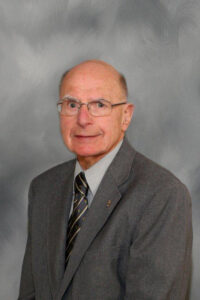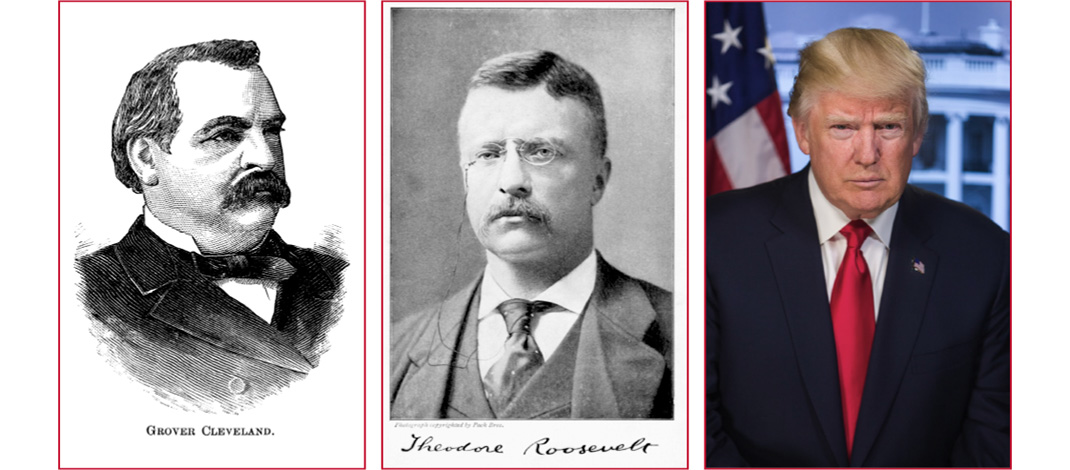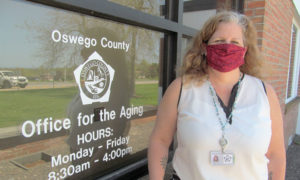Joe Biden is the 46th president of the United States — how many men have been president of the U.S.?
By Bruce Frassinelli bfrassinelli@ptd.net
One of my favorite trick questions is this: Joe Biden is the 46th president of the United States — how many men have been president of the U.S.?
Logic might say that the answer is 46, but it is not. The answer is 45.
How can that be?
Grover Cleveland, former governor of New York and mayor of Buffalo, was elected to non-consecutive terms. He is the only president to have two numbers – 22 and 24. He served from 1885 to 1889 and from 1893 until 1897. He also has the distinction of being the only president to win the popular vote on each of the three times that he ran. In his bid to seek-re-election in 1892, however, he lost the presidency to Benjamin Harrison, who had the required number of electoral votes despite having fewer popular votes than Cleveland.
What is really interesting is that if another former president and New York native is elected in 2024, he, too, will have two numbers. Donald Trump, who now is an official resident of Florida, served from 2017 until 2021, but lost his re-election bid in 2020.
Yet another New Yorker, former President Teddy Roosevelt, also aspired to make a comeback after having served as president between 1901 and 1909.
Roosevelt became president upon the death of William McKinley, who was assassinated while attending the Pan American Exposition in Buffalo on Sept. 6, 1901, and died eight days later, about six months into his second term in office. Roosevelt served out the remainder of McKinley’s term, then ran for re-election and won in 1904, serving a complete term until March 4, 1909. (Back then, presidents took office in early March, but upon adoption of the 20th Amendment to the U.S. Constitution in 1933, the date was changed to the current Jan. 20.) Roosevelt had pledged to limit himself to two terms, including the partial one he had after McKinley’s death.
In 1912, Roosevelt lost the Republican nomination to incumbent William Howard Taft, then chose to run as an independent under the label of the Bullmoose Party. Roosevelt not only succeeded in pulling votes away from Taft, but he placed second to Democrat Woodrow Wilson, a former president of Princeton University.
Wilson won in a landslide with 435 electoral votes, while Roosevelt had 88 and Taft had just 8. Wilson had 6.3 million popular votes, or 41.8% of the total cast; Roosevelt finished with 4.1 million, or 27.4%, while Taft had 3.49 million, or 23.4%. Socialist party candidate Eugene Debs received 901,500 votes, or 6.1% but won no electoral votes.
Roosevelt’s lack of success as a third-party candidate should be a cautionary message to others who aspire to travel this route. There are so many obstacles. Among them are: limited media coverage, access to debates, ballot access, funding and resources, voter resistance, especially among party faithful, the complexities of the electoral college system for these candidates, lack of party support and historical precedent.
Let’s be honest, no third-party presidential party candidates have fared well in modern history. H. Ross Perot, the Texas billionaire, was the most successful amassing 19.7 million popular votes in 1992. Even so, he had zero electoral votes and finished a distant third to Democrat Bill Clinton, the upset winner over incumbent Republican George W. Bush.
Four years later, Perot ran again as a reform party third candidate but received just 8.1 million votes that time around and, again, zero electoral votes.
Of the three presidents we’ve been dealing with who have significant New York backgrounds, Cleveland is the least known, so it’s time to learn some of his background.
Stephen Grover Cleveland is not a native New Yorker, but he had deep ties to the state starting as a boy when his minister father in 1850 moved the family from Caldwell, New Jersey, to Clinton in Oneida County to work as district secretary for the American Home Missionary Society.
The problem was that his father was unable to make enough money to sustain his large family of nine, so Grover was removed from school and sent to Fayetteville in Onondaga County where he served a two-year mercantile apprenticeship. Neighbors described Grover as “full of fun’’ and a prankster who enjoyed outdoor sports.
After completing this valuable experience, the future president returned to Clinton to resume his schooling. In 1853, when missionary work began to take a toll on Cleveland’s father’s health, he had to move the family again, this time taking an assignment in Holland Patent, 11 miles north of Utica.
A short time later, his father died from a gastric ulcer. It was reported in Cleveland’s biography that he learned of his father’s death from a newsboy hawking papers.
After his father’s death in 1853 when Grover was 16, he was again forced to leave school to help support his family. Later in the year, Cleveland’s brother, William, was hired as a teacher at the New York Institute for the Blind in New York City and was able to get a spot for his brother as an assistant teacher.
At the end of the school term in 1854, Cleveland returned home to Holland Patent where a church elder offered to pay for his college education if he promised to become a minister, but Cleveland, seeing what his father went through, politely declined and decided to head West.
He stopped in Buffalo where an uncle gave him a clerical job and introduced him to influential Buffalonians and took a clerkship from a prestigious law firm there. The 13th president of the United States, Millard Fillmore, once worked there. After three years, Cleveland left and started his own practice. Two years after the start of the Civil War, Cleveland was appointed assistant district attorney of Erie County.
Because of the Conscription Act of 1863 requiring all able-bodied men to serve in the Union Army or find a substitute, Cleveland found one for $150 (equivalent to about $3,400 today).
Cleveland was elected mayor of Buffalo in 1881 and governor of New York a year later. He was the leader of a wing of the Democratic Party that opposed high tariffs, free silver, imperialism, subsidies to businesses, farmers and veterans. His conservatism was embraced nationally, and he was admired for his honesty, integrity and self-reliance. He was known as a reformer who opposed political corruption, patronage and openly defied political bosses.
Cleveland won the presidency in 1884 in a close race with Republican James G. Blaine of Maine. Cleveland received 219 electoral votes to Blaine’s 182. He also had 57,000 more popular votes than Blaine. Unlike today when we have 50 states and a presidential candidate requires a minimum of 270 electoral votes to be elected, there were just 38 states in the union in 1884.
Four years later, Cleveland lost in his bid for re-election even though he had about 90,000 more popular votes than his Republican opponent and ultimate winner, Republican Benjamin Harrison, who wound up with 233 electoral votes to Cleveland’s 168.
Four years later, Cleveland became the first president in our nation’s history to regain the presidency after having lost it. Cleveland won with 277 electoral votes to Harrison’s 145. Cleveland also had about 438,000 more popular votes than Harrison.
With Trump the clear front-runner to win the Republican nomination in 2024, he is in a position to become just the second president to serve non-consecutive terms, but to state the obvious — it’s a long time from now until the presidential election in 2024.
 BRUCE FRASSINELLI is the former publisher of The Palladium-Times. He served as a governor of the Rotary Club District 7150 (Central NY) from July 2001 to June 2002.
BRUCE FRASSINELLI is the former publisher of The Palladium-Times. He served as a governor of the Rotary Club District 7150 (Central NY) from July 2001 to June 2002.




